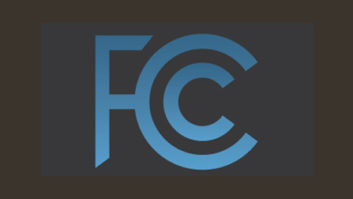A few issues back we talked about the “why” of owning a radio station. This time, we’ll deal with how. And the first part of “how” is how you get the money.
Whose money?
You really only have two choices: your money or someone else’s (including the seller’s).
If you use your own money, you will no doubt allow yourself extremely liberal repayment terms. Which is to say, you will pay yourself back when you sell out. If you use someone else’s, the terms will, no doubt, be a little stricter. Furthermore, you will end up paying interest. As an alternative, you might just give up some equity, or ownership, in exchange for the money, but in that event, you will have a “partner,” and those relationships can be more difficult to manage than a marriage.
If you borrow the money, you will have to repay it, and with interest. This so-called “debt service” can be a heavy burden and can make it almost impossible for the station to generate any cash flow. If you use your own money to avoid this burden, you lose the benefits of “leverage” (a topic covered in your Finance 101 book, if you are not familiar with the concept) but this might be preferable to carrying a lot of debt.
It is a simple exercise to “run the numbers” to see what works best, but be careful of your ability to service debt. Just remember, the friendly banker with the capped teeth who tells you how much his bank loves small businesses has a split personality. This minute: little Anakin Skywalker. Miss a payment: he’s your very own Darth Vader.
Lesson #1: Financing the Deal
If you are lucky enough to be able to pay cash for your dream, good for you. But that is a rare thing in my experience. More likely you’ll be trudging over to see little Anakin at the bank. Couple of points about that:
First, he won’t be thrilled to see you. This is because of the “Security Interest” rules of the FCC. This is really the “Follow the Money” rule.
Basically, the FCC says that whoever controls the money (in this case, the bank) also controls the license and should therefore, be the actual licensee. Since the whole idea is for you to be the licensee, that eliminates using the license as collateral against a loan.
Unfortunately, since the license is far and away the most valuable part of the station (around 80 to 90 percent), it will be difficult to raise much capital against the remaining assets.
There are, however, two exceptions: If you are buying an AM with some real estate under the tower, a bank will typically loan 80 percent loan/value on that. The bank will also loan against free cash flow (all of the cash left over after you pay for everything, including taxes), but usually only around 3 or 4 times that amount, and only if they are convinced that you will be able to maintain that historic cash flow.
Unfortunately, the guy selling will most often want 10 to 15 times cash flow, or more, so you will have a slight gap to fill.
This is where “non-traditional” financing comes in. Non-traditional financing is code for Uncle Joe’s money, seller financing, your kid’s college fund, etc. Uncle Joe’s non-traditional money might be pretty cheap, and you can probably borrow your kid’s money for free (since you stashed it away in the first place), but some secondary money is very expensive. This is because the bank (if you grovel well enough to actually get a loan) is always first in line for everything you own, including most of your physical anatomy, if you go under. The secondary guys, having greater risk in their position behind the bank, get more interest — and sometimes, a lot more.
For those willing to brave the federal labyrinth of forms and regulations, the Small Business Administration is a source of borrowed money; visit www.sba.gov. However, the SBA does not do the actual lending but rather acts as a guarantor for your loan, which you get from a regular bank; so again, you will be making a trip to introduce yourself to Mr. Skywalker, your friendly banker. An SBA loan takes a fair amount of time to set up and has certain restrictions, but if you can get one, the rates are very good, since the bank is guaranteed payment by all of us taxpayers.
More on raising capital
No matter what source of funds you are pursuing, your bank, Uncle Joe, etc., you are asking someone to fund your dream. Your dream, not theirs.
You are already convinced that this is a wonderful opportunity. They, no doubt, will need to be prodded somewhat. So be prepared. Create a business plan that accurately forecasts the performance you intend to achieve. Sprucing it up with color fonts and pretty binding is important, too, but concentrate mostly on substance. As for style, so long as it is not two lined pages ripped from a spiral notebook, you should be fine.
Have talking points ready so you can defend your estimates. Expect questions about your experience in running a business, your plans for growing the business and finally, your commitment to the business. If there is the slightest hint, the slightest hint that you are not fully invested in the deal, sink or swim, win or lose, rich or penniless, no one will back you.
One last thing: Most small businesses (and microbial ones, like yours) fail because they are undercapitalized. That is to say, they do not have enough money saved up to keep paying the bills, particularly the debt service and irritating little things like payroll taxes, when their revenue line hiccups. Your revenue generating ability will fluctuate. You will have months when you were absolutely certain you would book X dollars, and in fact, you end up booking X minus. You must have the ability to make up the difference with a line of credit, savings, set asides, or some other way to keep the lights on. I have always figured out how much money I really, really needed, and then increased it by 50 percent. Tough to do, but I’ve never gone broke, either.
Bottom line to all of this: be very, very pessimistic — some would say realistic — with your revenue and expense estimates. You always have to pay your debt service first, lest mean old Uncle Joe foreclose on your transmitter; and you must have enough left over to pay your monthly expenses.
The good news is that a radio station is not very capital intensive and the cash flow leverages nicely. There are really only two expense items that go up with increased sales: commissions and music license fees. In other words, once you pay all of the recurring monthly “fixed” expenses, 70 percent or so of every dollar in the door goes to the bottom line.
If you plan right and sell hard, it’s tough not to make money.
Lesson #2: The FCC
A lot of people fear the whole regulatory deal and the enforcement issues that come with it. The Rules, although relaxed significantly over the past 10 years or so, are still complex; failure to adhere to them can cost you a lot of money.
Fortunately, you can educate yourself cheaply by simply reading (and re-reading) the Rules on the Web at www.gpo.gov. That is the site for the Government Printing Office; Title 47 of the United States Code of Federal Regulations, which deals with all Federally Regulated Communications, is accessible from that site.
Zero in on Part 73 and start reading. AM Rules start at 73.11, FM starts at 73.201 and Rules applicable to us all —filing requirements, etc. — start at 73.1100.
A note of caution: few of us would sterilize a kitchen knife and operate on ourselves. Navigating your way through the nuances of FCC minutia is fairly complicated. It would not hurt to find a good FCC attorney to check your work, if you choose to do it. A simple way to find an attorney is to ask someone else in the business. Anyone who has been an owner will have one or more recommendations.
Assuming that you’ve found the station, found the money and negotiated the deal, and it has all passed muster at the commission, you are now an official station owner. And now that you own it, you’ve got to run it. More on that next time.







